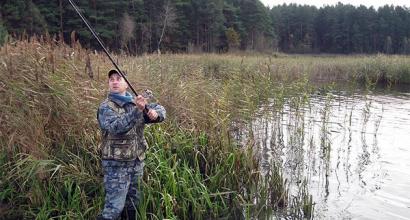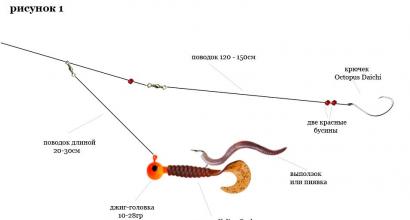Fishing on the bottom
Fishing on the donka is very popular with anglers today. This technology combines simplicity, affordable cost and high efficiency. In this article we will tell you about bottom tackle, its varieties, baits and fishing technology.
Bottom tackle has been known since ancient times and has served anglers faithfully for many hundreds of years. The main purpose of this tackle is to catch large fish that feed from the bottom.
The design of the bottom gear is extremely simple. The fishing line is wound on a spool or reel, has a large sinker, above which there are several baited leashes.
The presence of a large sinker is necessary for long-distance casts from the hand and keeping the bait motionless at the bottom even with a strong current of the river.
Tackle line
When casting on the bottom tackle, there are significant loads, so it is recommended to choose a fairly thick fishing line. The minimum diameter is 0.35 mm. Since fishing with bottom tackle primarily involves large-sized trophies, the use of thick and strong fishing line will allow you to confidently play even large and strong fish.
Choice of sinker
The optimal shape of the sinker for the donkey is a teardrop shape, which allows you to provide the longest possible casting. The weight of the cargo can vary from 30 to 100 grams. It should be noted that heavy sinkers are easier to cast, so they are more suitable for fishing in the fast flow of the river. At the same time, it should be borne in mind that the greater the weight of the sinker, the more noise it makes when entering the water. Consequently, cautious fish can leave the place of fishing for a long time. Therefore, if possible, we recommend using sinkers weighing 30 - 50 grams.
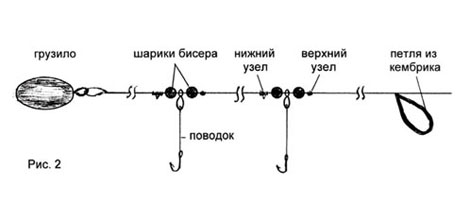
The main trophy when fishing on the bottom is a large fish, so the angler must choose the appropriate large and high-quality hooks. It is optimal to use hooks with a self-setting effect, in some cases even large-sized twins are used.
Choosing a bait
The choice of bait is one of the components of successful catching fish. The choice of this or that bait directly depends on the fish you are going to catch and the characteristics of a particular reservoir. It is also necessary to take into account the presence of current at the fishing site. Remember that the best bait will be the usual fish food. That is why the use of expensive nozzles for a feeder on a remote river or lake will not give the desired effect. The fish are simply not used to such a bait, and will refuse to peck at it.
Try to expand the choice of nozzles used as much as possible. It can be various cereals, peas, grains, dough or nozzles of animal origin. It will be optimal if you use several leashes with different nozzles on the donk at once. So you can significantly increase your chances of catching. By determining the preferred fish bait for a particular reservoir, you will subsequently be able to catch the largest and rarest trophy specimens.
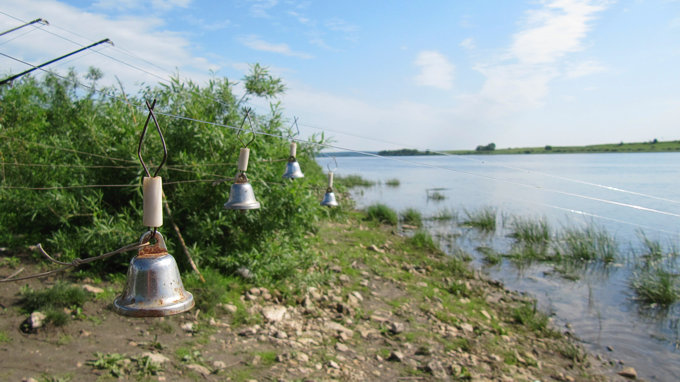
As a rule, anglers who fish on bottom gear use not one, but several bottoms at once. This allows them to occupy a vast area of the coast, which increases the chances of a catch.
A donkey reel or a reel with a small spinning rod must be carefully secured to the bank. Since the fish can bite quickly and intensely, an unsecured reel can simply be dragged into the water. If possible, it is recommended to braid the fishing line for bottom snags on the shore or small trees.
When choosing a site for fishing, it is necessary to give preference to places without snags and algae. Rocky bottom is also not recommended, where the likelihood of hooks increases. The best time for fishing is evening, night and morning. It is recommended to install donkeys in the evening and check them in the middle of the night.
In most cases, there are no problems with casting. It is necessary to swing a heavy load like a pendulum and release the fishing line. Pre-wind the required length of line from the reel and lay it in neat rings. It is quite possible that initially you will have some difficulties with casting, but after a little training you will be able to cast a sinker 50 meters or more.
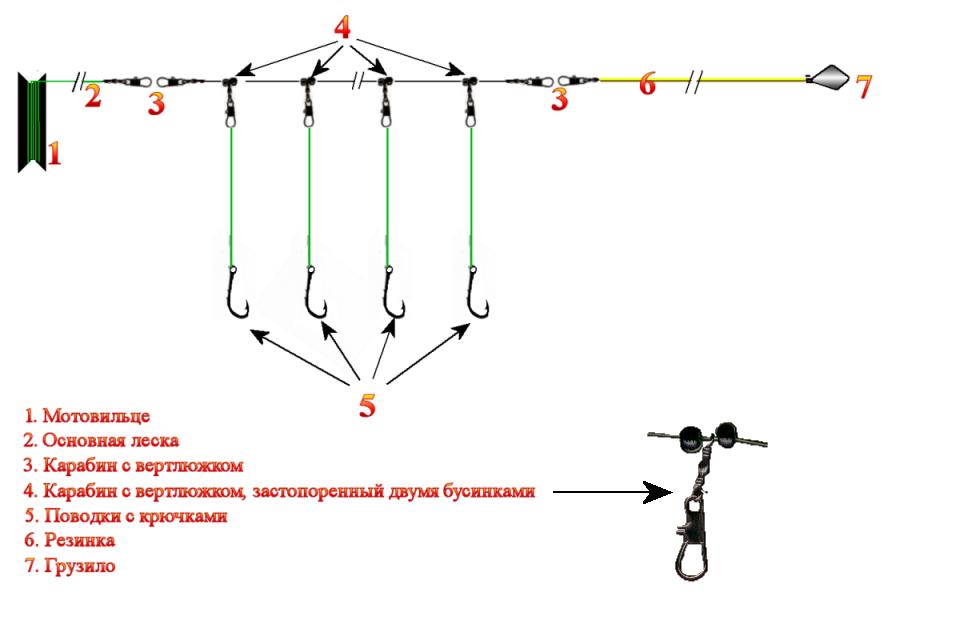
Many anglers when using a donkey faced the problem of silent casting. The solution to this problem was the use of special rubber shock absorbers, which made it possible to silently make repeated casts.
Advantages of donoks with rubber shock absorbers:
- You can deliver bait to one place you have baited.
- Complete noiselessness of repeated casts.
- Possibility of the so-called bait game.
- Spot feeding available.
- A large number of leashes on the donk increases the chances of success.
Of the shortcomings, it is only necessary to note the fact that the gum quickly fails and must be replaced.
This gear consists of:
- Safety line with a cross section of 0.5 mm.
- Heavy sinker on a kapron meter leash.
- with a length of about 10 meters.
- Fishing lines with leashes at a distance of several meters from each other.
- The main fishing line with a diameter of 0.35 millimeters.
Possible difficulties you may have only at the first casting of the sinker. In this case, we can recommend that you use a boat that will allow you to silently lower a heavy load to the desired fishing spot. Do not forget to tie a foam float to a heavy sinker, which will allow you to get tackle when it breaks. After you've finished fishing, you can safely sail the boat to the foam float and get your tackle.
Before proceeding directly to fishing, it is necessary to properly prepare the gear. A donkey with an elastic band has two reels, one of which has a fishing line with an elastic band, and the second has a safety cable. It is necessary to put the reel at a distance of 5 meters from each other. Calculate the required number of turns of fishing line that you will need for an accurate cast. It is necessary to lay the turns of the fishing line in such a way that when casting, the upper turns begin to unwind, which will avoid the possibility of tangling the fishing line. Do not forget about the presence of insurance, which unwinds a few meters more than the main fishing line with an elastic band.
Remember that it is necessary to put a baited line after casting a donkey with an elastic band.
The connection is made with the help of carabiners, and after the end of fishing, the carabiner comes unfastened. You just have to get the cargo out of the water with the help of insurance. Store band rigging on separate reels. That will ensure its safety and durability.
Spinning rods for donkey
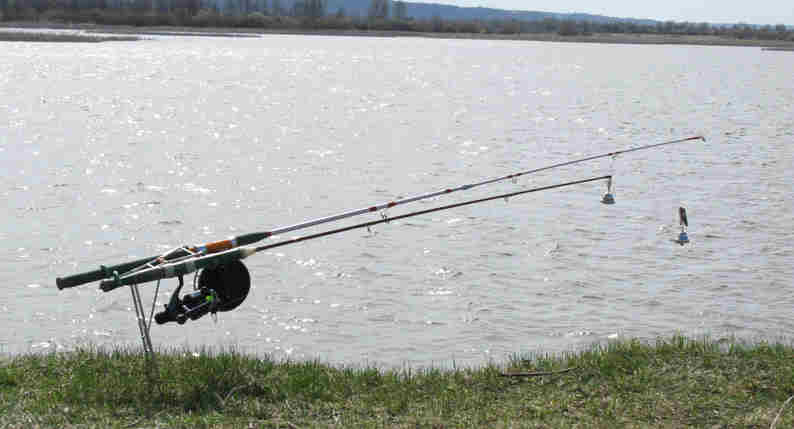
Initially, the classic donka was an exclusively hand tackle. However, later spinning rods became very popular, the coil of which was actually used instead of a reel.
With minor modifications, spinning for the donkey became known as a feeder. This type of tackle is very popular today and allows you to fish a variety of large fish. The popularity of the feeder is due to the ease of catching, the availability of tackle and the ability to catch the maximum trophies. At the same time, it must be taken into account that the feeder is a rather specific tackle, which in unfamiliar conditions on new lakes and rivers may not give any result at all. But in those places where anglers often catch on a feeder, its efficiency is at a high level.
The use of a spinning rod for a donkey allows you to significantly simplify the process of casting the bait. In this case, there is no need to use expensive reels, which are necessary for classic spinning. We also note the significantly simplified process of playing fish. While in the past everything had to be done by hand with a reel, with a spinning rod and a reel you can optimally play even the strongest fish. The risk of fish coming off the hook is reduced, as you can optimally adjust the tension of the line when playing the fish.
About 50 meters of fishing line with a thickness of 0.3 meters is wound on the reel. The leaders are attached to the main line with a carabiner, and a heavy weight allows you to easily cast to the maximum possible distance. In total, when buying Chinese reels, the total cost of tackle can be several tens of dollars.
Donkeys with a feeder
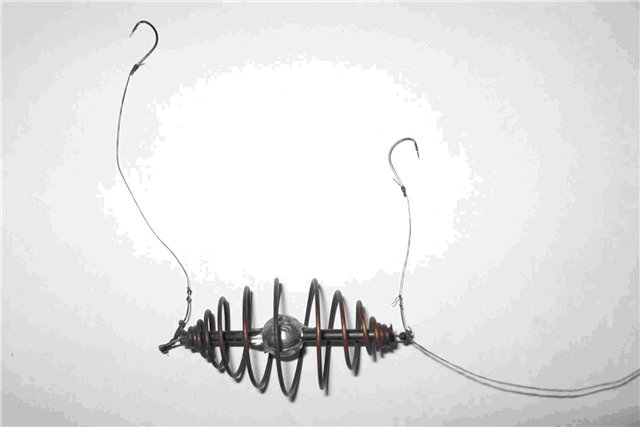
With long casts, which are practiced while fishing with a bottom, the angler may face the problem of baiting fish. How exactly to deliver bait to the place of an abandoned donkey? As a result, the idea of modernizing the gear was born, which received a small feeder attached with a carabiner.
Spring
Many anglers made primitive artisanal feeders from small ones. Today, such spring feeders are effectively used for bottom fishing.
The main object of fishing on spring feeders are white fish. Such fish include scavenger, bream and carp. In rare cases, crucian carp and silver carp are caught with the help of springs. The choice of bait and nozzles for fishing largely depends on the specific characteristics of the reservoir and the preferences of the local fish.
feeder
In specialized stores, you can find dozens of different models of feeders, which differ in their weight and shape. They are intended for various fishing conditions and various purposes. However, they are united by the fact that the main purpose of the feeder is to attract fish.
Such feeders are very popular when fishing with a feeder. You can make a feeder yourself from metal wire and lead. You can also purchase ready-made varieties of feeders in specialized stores. Their cost is not high, but at the same time they are effective and allow you to lure fish with high quality, thereby increasing the chances of success.
Remember to use the same bait on the bait and on the hook. This will allow you to successfully catch even the most cautious and large fish.
Bite alarm for donkey
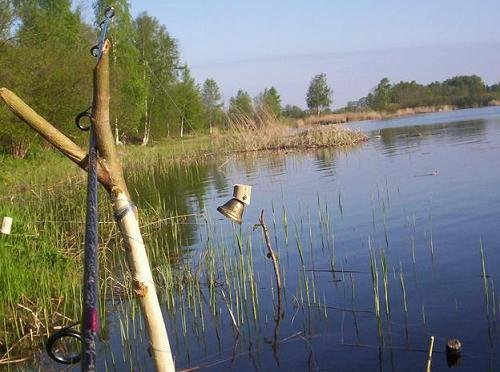
bells
For many years, the most popular bite alarm on bottom rods was the common bell. It was attached to the sagging main line directly at the reel or rod. We can say that such bells are the best option for tackle without a rod.
Electronic bite alarm
As new technologies emerged, mechanical wind chimes began to improve. Special waterproof electronic signaling devices appeared, which emitted a characteristic sound when biting. Also, such signaling devices were equipped with a light indication. The only drawback of such electronic bite alarms is their relatively high cost.
bells
Bells is a rather interesting variant of the bite signaling device, which is located on the tip of the rod. The only drawback of such a signaling device is the absence of a bite in cases where the fish, after taking the bait, goes to the angler. In such cases, the bells do not signal a bite, and the fishing line simply sags.
Upgraded versions of bells have a special niche for installing indicator lights. This will allow you to successfully use them for night fishing.
Rod as a bite signal
It is possible to use the rod itself as an excellent signaling device. When biting a large fish, the tip of the fishing rod begins to bend and tremble. At the same time, it should be borne in mind that such signaling devices are suitable only for daylight hours, and require constant attention from the fisherman to the rod.
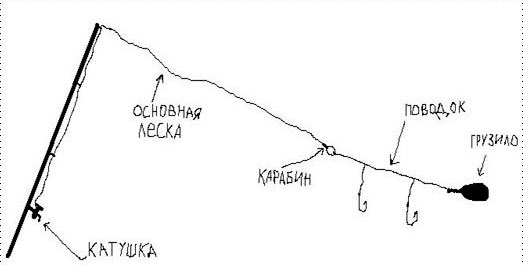
Today, there are dozens, if not hundreds, of different donkey rigs. It is simply impossible to describe them all. Let's dwell on the most common and reliable options.
The easiest option
Despite its simplicity of equipment, this option is perfect for fishing the largest trophy fish. In this case, only one node is used, so the strength of the equipment is beyond doubt.
We attach a sliding sinker in the form of a teardrop shape or an olive to the fishing line. To fix the sinker, you must use a silicone retainer. Remember that the stopper must be fixed firmly and rigidly enough. When casting tackle, the stopper has a significant load, but at the same time it must maintain its position. We can recommend that you use a lead soft shot, which is clamped on a fishing line, as such a reliable stopper. A hook is tied to the end of the fishing line without a leash. It is also possible to rig using a leash, which is attached through a swivel.
Snap with spring
With the same success donkey equipment with a spring is suitable for fishing with a rod, and with manual casting. Especially effective equipment with a spring when fishing in lakes and rivers with calm water.
The first option is a sliding donkey rig with a spring. In our case, we replace the sliding sinker of the donkey with a spring. Viscous porridge or peas are easily stuffed into the spring. The choice of bait directly depends on the type of fish and its specific preferences in your pond.
The advantage of a sliding rig is that the fish does not feel resistance during the bite, which is necessary for catching cautious and large fish.
In the second version of the equipment, short leashes are installed on the spring, which are recessed in the bait located in the spring. In fact, in this case, the bait is used as top dressing and bait. The second option is perfect for catching bream and carp. In this version of the equipment, the fish detects itself on its own, and the angler only needs to pull it out of the water. We can recommend that you use braided line with a thickness of 0.1 - 0.15 mm for leashes.
In the event that you are fishing in a strong current or there are deep holes and a sharp drop in depth, it is recommended to install flat sliding sinkers directly in front of the spring. Such a flat shape of the sinker will not allow it to be carried away by the current.

